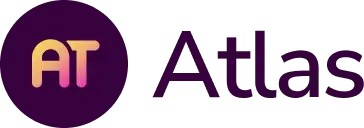Written by Matthew Baganz, Strothoff International School
When you ask your students what it means to be a risk-taker, how many answers include jumping off of something high? Have you ever witnessed the word principled draw blank faces across an entire class of fourth graders? How many of your students define an inquirer as someone who simply asks a question?
Here’s a question: Why do kids struggle to understand the IB Learner Profile?
So Many Goals, So Little Time
The IB Learner Profile is a complex concept which students will not digest if the attributes are reserved for last-minute cameo appearances at the end of a reporting period. In order to develop a panoramic vision of the IB Learner Profile, students need regular exposure to the attributes in multiple contexts.
Unfortunately the PYP curriculum is so packed with learning goals that there’s little time to unpack the IB Learner Profile. Below are some curricular statistics that a primary teacher needs to cover in a school year:
- 6 PYP subject areas
- 25 sub-strands
- 60 conceptual understandings
- 238 learning outcomes
- 6 units of inquiry
- 6 transdisciplinary themes
- 6 central ideas
- 12-24 lines of inquiry
- 8 key concepts
Looking at the 238 learning outcomes alone, a teacher has just enough contact time to unpack, inquire into, assess, and move on from a little more than one learning outcome every day. (Forget about everything else in the list above.)
Now enter a set of ten attributes that make up the backbone of the IB mission to “develop internationally-minded people who, recognizing their common humanity and shared guardianship of the planet, help to create a more peaceful world.”
There’s simply no time, and since most students can explain how to be caring better than they can explain the inverse relationship between exponents and roots (PYP Pattern and Function Phase 4 Learning Outcome #3), the ideals of the IB Learner Profile take second seat to the learning outcomes of PYP subject areas.
So What Can We Do?
Double Down on Doubling Up
Combination is a trademark of transdisciplinary learning. If you can create a resource that infuses PYP subject area learning outcomes into experiences with the IB Learner Profile, you’ve not only honored the IB’s mission to develop internationally-minded people with a transdisciplinary approach, you’ve also saved time, and maybe even made some money. How?
Step 1: Search and Study
Choose your favorite IB Learner Profile attribute and study it. Create lists of synonyms and antonyms. Collect example activities that nurture this trait. Search the term on Pinterest and YouTube…. Wrap your head around it.
Step 2: Mix and Match
Choose your favorite PYP subject area and pull out its corresponding PYP Scope and Sequence. Read each learning outcome through the lens of your attribute and ask yourself what links can be made between the two. Jot down the link in the language of activity directions.
Example:
risk-taker + math learning outcome “design a survey and systematically collect, record, organize and display the data in a bar graph, circle graph, line graph”
Learner profile + math learning outcome = student activity
Directions for student activity: Sometimes we’re intimidated by things because we don’t know about them. Write questions you might ask older students to learn more about what it’s like to be their age. Use the space below to tally your answers and create a graph.
Don’t force the connection between the learning outcome and learner profile. Insert the attribute into the outcomes only where it naturally fits, and then move on to the next subject area until you’ve gone through all six PYP subjects with your selected attribute.
Step 3: Rinse and Repeat
Choose your second favorite IB Learner Profile attribute and… (see Step 1). By the time you’ve combed the curriculum with all ten attributes, chances are dozens of those 238 learning outcomes will have been laced with a lesson on the Learner Profile. You would have had to teach those learning outcomes anyway; now you’ve planned a transdisciplinary activity coated with the mission of the IBO.
From Plans to Self-Publishing
Perhaps now more than ever we judge books by covers as we speed scroll through feeds and thumbnails, clicking only on the images that click with us. Kids are no different with the handouts they receive in class. The more professional your materials look, the more seriously your students will engage with them. A black and white, handwritten photocopy just won’t command the same attention as a full-color, professionally-bound workbook. Luckily the old stigmas of self-publishing have dissolved as the industry has become more diverse in the Information Age, where consumers expect to learn easily. (It’s one thing to publish your personal love story, quite another to publish your own nonfiction educational materials.) But How?
Step 1: Layout
You’ve got a piece of paper with brief directions scribbled next to a rudimentary sketch of a child riding a bike. Some of the resources below can take your plan to the next level with drag and drop ease: plug in your text and images* into professional templates and come out with a professional-looking activity sheet.
Some Layout Resources: Canva, Crello, Piktochart, Fotor, Venngage
*Standard copyright prohibits photocopying, scanning, and copy-and-pasting. Don’t take a chance on copyright infringement, especially if you’re considering selling your materials on platforms like Teachers Pay Teachers or Amazon. Use royalty-free images or buy licenses, which come in relatively affordable subscriptions.
Some Image Stock Resources: Wiki Commons, Unsplash, Pexels, Bigstock, Vecteezy
Step 2: Printout
Transforming your computer screen creations into books your students can hold and take home is fast and affordable, with printing prices as low as 5.28€ for a full color, 132-page perfectly bound book.
Some Self-publishing resources: Amazon’s Kindle Direct Publishing, IngramSpark, Barnes and Noble Press, Lulu, Bookbaby
As teachers we all have a similar mission that centers on the welfare and development of our students. To fix this shortage of time and resources for achieving this, let’s build this library together so our students have a real opportunity to live up to the IB mission and become truly internationally-minded people. The world is going to need them.
 Matthew Baganz holds a Master’s degree in Multicultural Education and has been working in the classroom for over 15 years, the last few of which he also worked in administration for the Communications Department at Strothoff International School. He opened Liv & Blue Publishing, LLC in 2018 and will release the company’s 5th title in late 2019. He can be reached at [email protected].
Matthew Baganz holds a Master’s degree in Multicultural Education and has been working in the classroom for over 15 years, the last few of which he also worked in administration for the Communications Department at Strothoff International School. He opened Liv & Blue Publishing, LLC in 2018 and will release the company’s 5th title in late 2019. He can be reached at [email protected].

